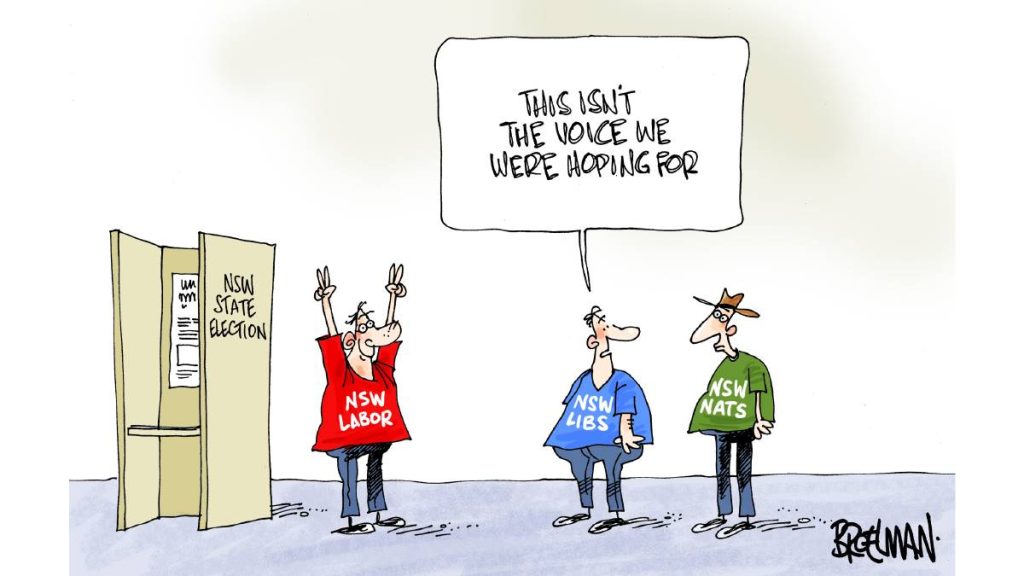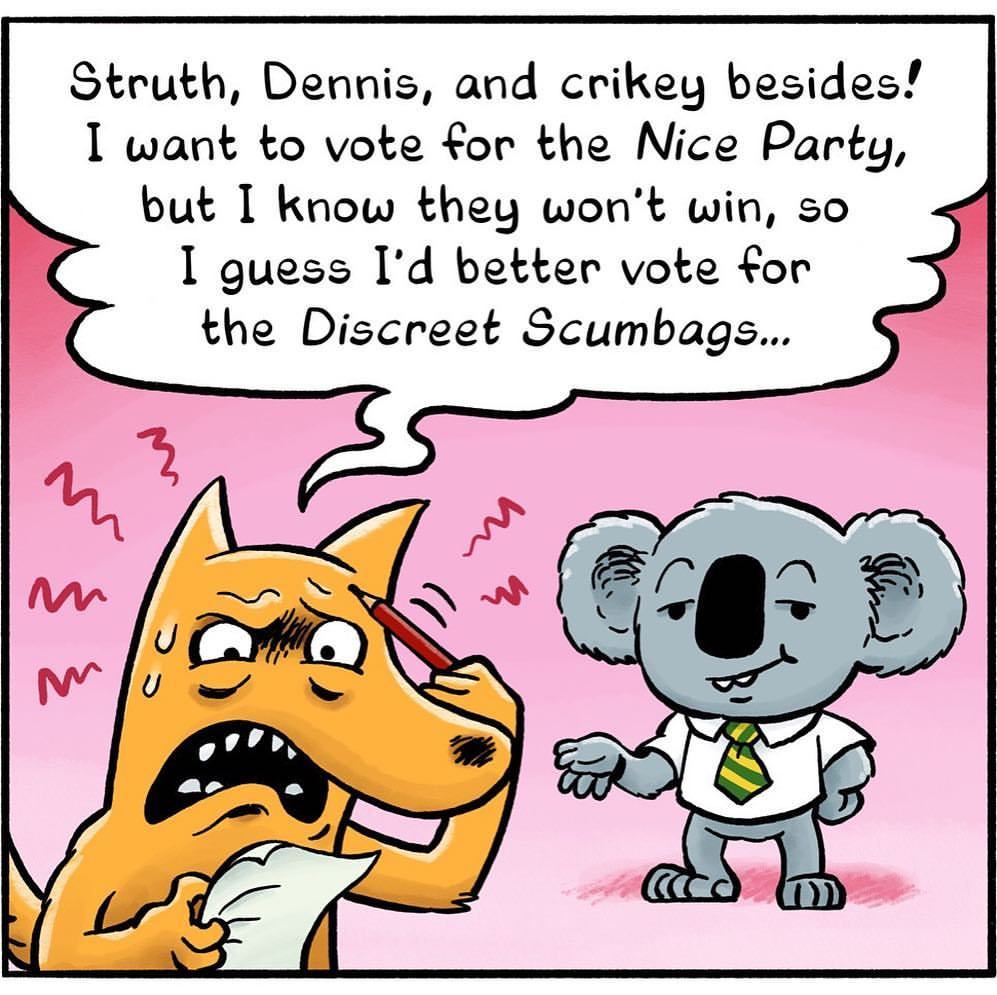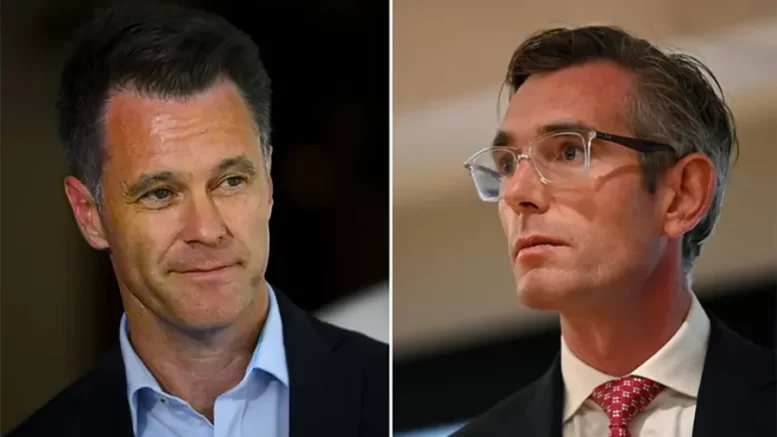Contributed by Jim Hayes
Forget all the hype, The New South Wales state election of Saturday produced a result like all the recent ones across Australia. It’s true that did receive a swing towards it of 3.8 percent due to some state factors. But this doesn’t change the underlying shift that is common to the whole of Australia, including this state.
There was a turning away from the major parties. A significant part of 5.9 percent swung towards the independents and Greens. The biggest price was paid by the Coalition’s Liberal and National Parties.
Labor will now be the governing party, which means it has hold of the federal and all state governments except Tasmania.

This should provide a wonderful opportunity to leave a big mark on Australian politics. Big changes could be made. But they won’t. Labor is committed to doing a minimalist approach. The emphasis is carrying on business as usual.
Look at the election result in its proper perspective. Labor wins at least 9 new seats to make a majority of 6 seats with the support of only 37.2 of the electorate. This was possible because of the optional preferential election system that produces a different result to other parts of Australia using the preferential system, where there is a far greater opportunity for small parties and independents to direct second preferences away from the major parties.
Even more significant is the gerrymander that means that the smaller parties end independents must do much better to get any result than the candidates of the major parties to get anywhere. The exception is the National Party, where the gerrymander works to its benefit. The clearest example of this is the Greens. They came into the election with 10 percent of the votes and made a small gain of 0.6 percent and will have only 3 seats in the new parliament. Contrast this with the Nationals with only 5.3 percent of the vote and retaining 9 seats.
You could say that the electoral system is rigged to produce results within a narrow margin.

Illustration by Patrick Alexander Bunyip
Labor benefited mostly from a reaction against the Coalition in Sydney. While winning overall thanks to the Coalition’s loss of a significant [part of its heartland towards independents. This gave Labor the opportunity to stanch a bunch of seats. But Labor lost votes in its own heartlands. Often in the magnitude of a swing of around 10 percent, and sometimes even more. These seats were held thanks to the size of the previous margins.
Beneath the veneer of the election result there is the reality that much of New South Wales does not trust the political elite. Votes are generally cast against those distrusted the most. Voting for a party does not means real support for it.
There are good reasons for this. The perception of the major parties is that they don’t deliver on promises and work for the big end of town rather than the majority.
It is also true that a substantial part of big business backed labour, at least for now. A good indicator was telling pro Labor bias in media reporting over this election. Undoubtedly, a significant factor in this is the internal division and bickering in the Liberal camp, which in itself is an indicator of greater a contradiction in its own base, around how to respond to the sputtering economy and cost of living crisis, the impact of climate change, and a range of social policies. The division works around whether to compromise on key issues of concern to the community or play hard ball and shift towards the political right.
Under the state leadership of Dominic Perrottet, They fell between the two stools and pleased no one. The Liberal’s losses around the country threatens to bury them permanently.
This should provide the best conditions for Labor to change the economic and social direction of Australia. There could be a complete break away from neoliberalism and towards the concept of putting people first. The problem is that Labor is thoroughly committed to continuing broadly along he same policies as the Coalition, except with a slightly more human face.
The problem with this is that it will not succeed in the end. This is the failed direction that has contributed to many of the [problems of today. Why do they persist in this then? Because of habit, and because this is the only way those who have the real power in the economy and society will let them be the government.
Countering this is that Australia is starting to wake up to the reality. This is the main reason why the Australian political system is becoming less stable, and it is this that will provide the opportunities for change in the future. If Labor doesn’t deliver enough, it will be in big trouble before too long. This is its big challenge.


Be the first to comment on "What does the election result in New South Wales tell us?"